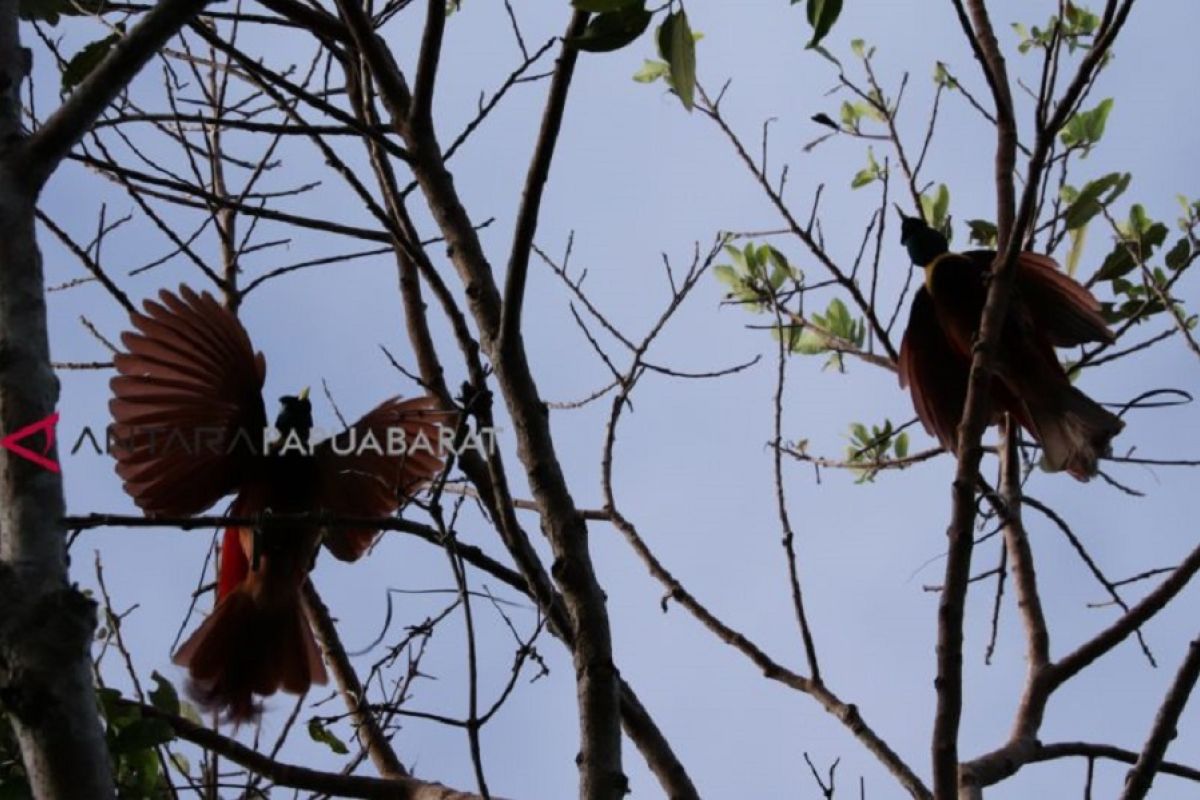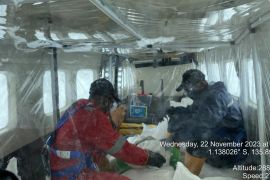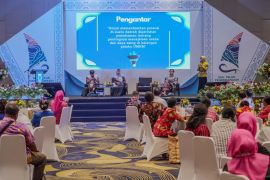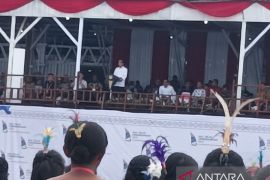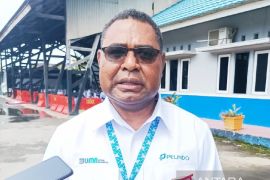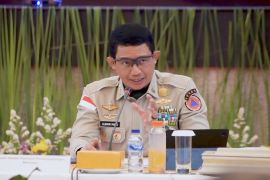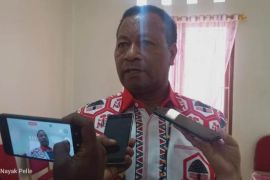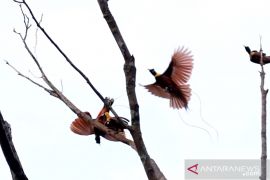Waisimon is an indigenous Papuan forest preserver who has won scores of awards, including Kalpataru, a top environmental prize, owing to his dedication to conserving animals and plants of Papua.
He maintains an indigenous forest in Rhepang Muaif, Nimbokrang, Jayapura district, Papua, located around three hours to the west of Jayapura city. If you come to this place, you can walk around half of Sentani Lake.
Our goal in entering the forest that morning was to catch a glimpse of a unique bird that is native to Papua and whose name is familiar to all of Indonesia, especially since the creature is one of the mascots of the 2021 Papua National Sports Week (PON).
That bird is cenderawasih. Cenderawasih is very secretive and is tough to spot in its natural habitat. With a penchant for high places, the bird is very sensitive to sound and movement, as if it knows that somebody is watching it.
It has sharp eyes and ears that allow it to detect sounds dozens of meters away. While entering the indigenous forest that Waisimon has turned into an ecotourism site, we have to keep our voices to a whisper while sneaking around like a predator looking for its prey.
"Do not be so loud," Waisimon reminded us.
"Do not touch the branch," he told us a few times while we were crouched next to him.
Rustling branches can disturb leaves and make the cenderawasih feel annoyed and detect human presence, he explained. This would cause the bird to fly away from the spot we were observing, he said.
For almost three hours we crouched to take a peek at cendrawasih.
One would need a telescope to see the bird clearly, or a camera with a telephoto lens in order to capture each detail of the heavenly bird.
Do not assume that the bird can be spotted without those devices, especially since cenderawasih only appears in the morning and afternoon.
Outside of those two time periods, one would only hear a loud cry that resounds across the forest, even though the cenderawasih does not have the largest body.
Do not compare it to an eagle, since this particular bird, which also lives in Isyo Hills, is still too big to be compared to the cenderawasih. However, the cenderawasih's cry truly echoes through the forest.
Truly Mysterious
It is hard to spot a cenderawasih perched on a tree, unless one is willing to be patient. The environs it is found in are no place for a selfie. There are far easier spots for the click-happy
Furthermore, Waisimon would rather have no truck with visitors who are only interested in taking pictures.
He looks forward to visitors who love birds and the environment, who care about nature conservation and want to know how the cenderawasih lives in its natural habitat as opposed to the cruel cages that trap this beautiful bird.
However, nobody, not even Waisimon, knows where the cenderawasih makes its nest. The bird is so mysterious that even native Papuans do not know where its nest lies.
"To this day, we do not what a cenderawasih nest looks like and where is it located," Daud Wouw, our tour guide, said.
The 20-year-old, one of Waisimon's most trusted guides, was born and raised in regions where the cenderawasih lives.
"Somebody once admitted to having seen a cenderawasih nest. I don't believe it. I asked, 'Where is the proof? Where is the picture?' but the person could not really prove it," Waisimon remarked in connection with Wouw.
According to Waisimon, not only the cenderawasih, but even forest pigeons no longer make their nests in places where humans can reach them.
"As soon as a forest pigeon knows that its nest has been seen by a human, it drops its eggs, and leaves the nest, never making nests again in places where humans have seen them," he informed.
Though they can be found in places like Papua New Guinea and Australia, around 30 out of the 43 species of cenderawasih are found in Indonesia, and 28 of them reside in Papua.
In Isyo Hills, around that 200 hectares of forest, there are four kinds of cenderawasih, with their number pegged at 50. Half of them are cenderawasih who were released into the wild after they were rescued from illegal traffickers.
The four cenderawasih are cenderawasih mati kawat, cenderawasih opada, cenderawasih raja, and cenderawasih paruh sabit.
There are other types of birds in the forest such as the victoria crowned pigeon, yellow bird kingfisher, Papuan babbler, and lesser bird of paradise.
Steel Tree
Isyo Hills also has plants native to Papua, including hundreds of trees as well as flowers. However, it is the cenderawasih that tends to be the primary reason why people come to Isyo Hills; most of them are from abroad.
The bird is extraordinarily beautiful, especially when it is perching or flying from one tree to another. The flap of its wings exhibits exotic colors, especially the male cenderawasih.
Cenderawasih performs mating rituals every morning and afternoon. The males are very shy, except when they are singing and dancing while showing off their tails atop a tree branch.
"When the male calls, the female comes," Waisimon said.
However, the males are not confident of calling the females if their tails are messy since the females would not find them pretty, he said.
They always appear every morning and afternoon, hanging out in the same place, he said.
"They usually eat the fruits of this steel tree," Wouw noted.
Steel tree is a tree that is commonly used to build houses and buildings in Papua. Much like its name, the tree is as strong as steel, making it a reliable material for making buildings.
However, the tree is a primary target for illegal logging, which Waisimon said he is trying to fight by encouraging people to care about nature conservation.
In addition to being the primary habitat for cenderawasih, the steel tree also acts as the primary marker of Papua's biodiversity, he said.
Cenderawasih also plays a large role in preserving this tree since this bird disperses its seeds to other places, he informed.
It would be unimaginable if the steel trees were to be cut down sporadically and especially if it is done in an illegal way, where there would not be any effort to replant them, Waisimon said.
If this illegal activity continues, then the cendrawasih and other animals would lose their habitat and walk the road to extinction, he said.
The extinction of these birds would also ruin the balance of the ecosystem, even though Papua is one of the planet's lungs that is important for humans, he said.
Failing to spot the cenderawasih in its natural habitat due to imperfect equipment is disappointing, he remarked. However, not being able to see it because its habitat has been ruined due to human selfishness would be a major disaster, he added.
Related news: EARTH WIRE -- Adat community urged to protect habitats of birds of paradise
Related news: WWF`Saireri expedition team concludes mission in Yapen Islands
Related news: WWF fears trade of bird of paradise
Editor: Rahmad Nasution
Copyright © ANTARA 2021
